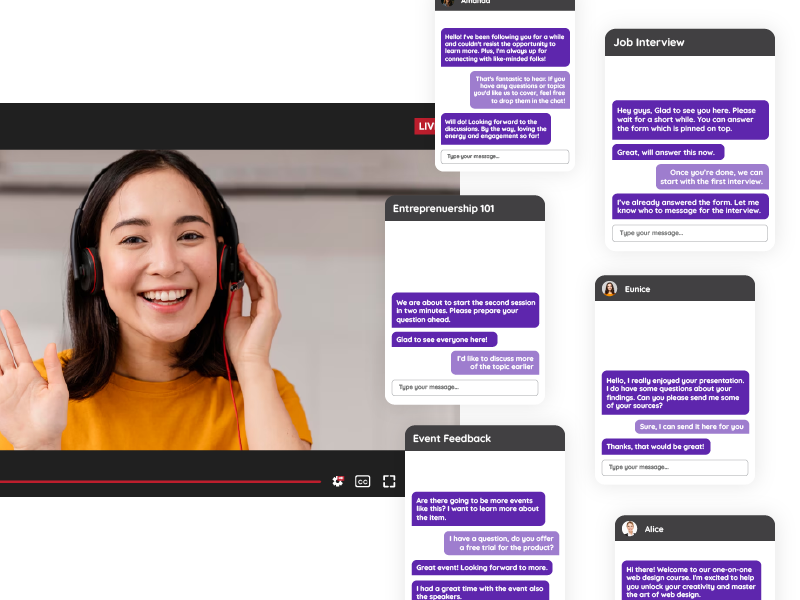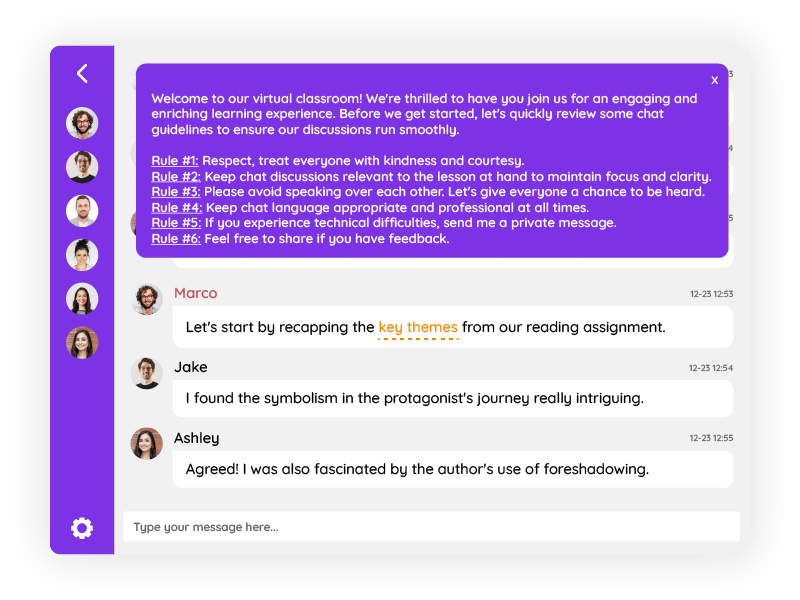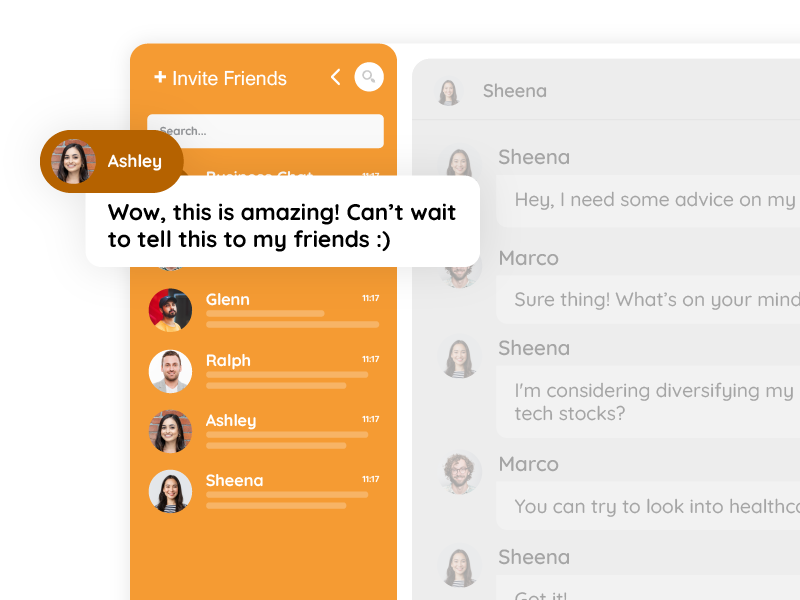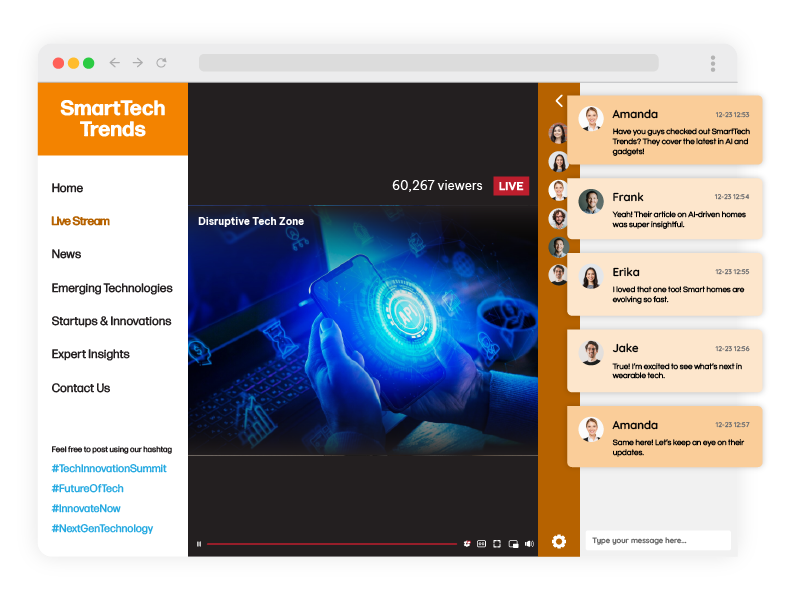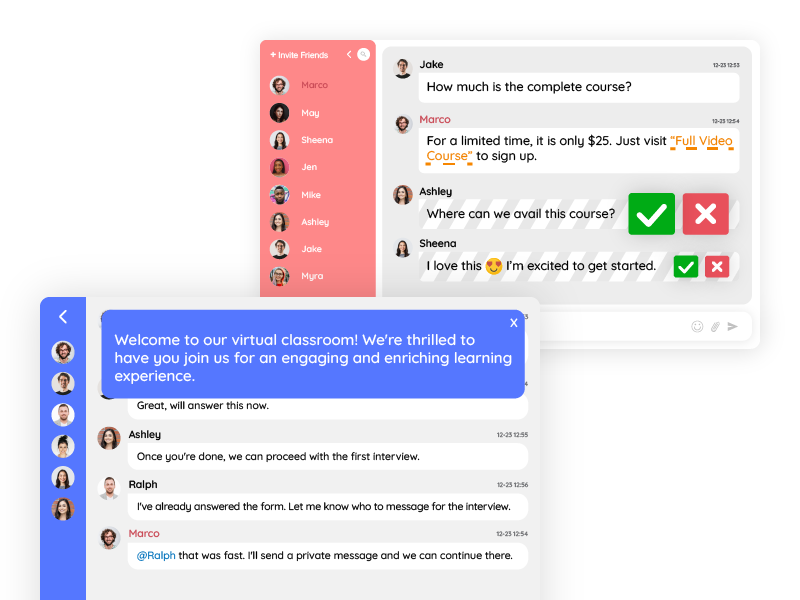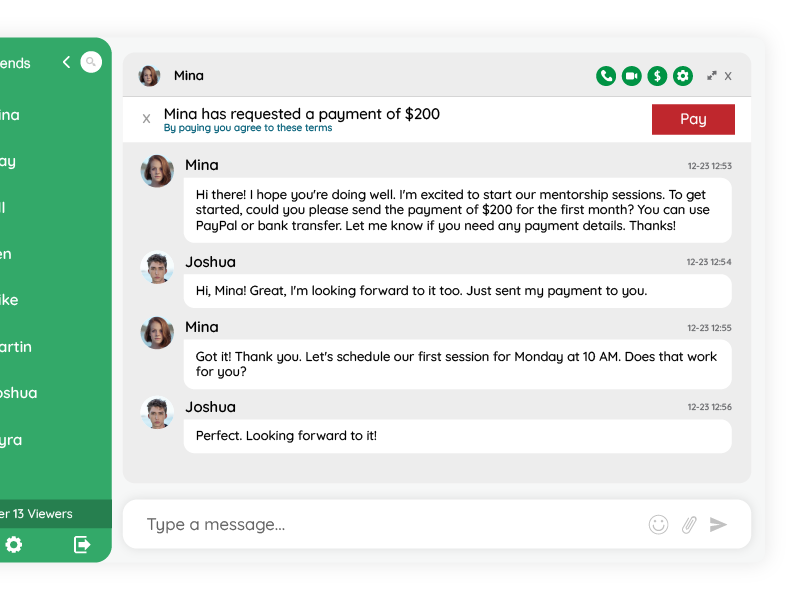Online learning has opened doors for millions of students, professionals, and hobbyists alike. But while course creators have mastered delivering structured content, one piece still lags behind: real-time social engagement. Too many online courses are one-way conversations, watch the video, take the quiz, move on.
The missing ingredient? A social chat room for online learning, a live, interactive space embedded directly into the learning experience.
In this blog, we’ll explore how social chat rooms bridge the engagement gap, how to set one up (with full instructions), and why it’s the smartest upgrade you can make to your e-learning platform today.
Bring Your Online Classroom to Life: How to Add a Social Chat Room
Before diving into use cases and benefits, let’s talk about implementation. Whether you’re using a custom platform or WordPress with plugins like LearnDash or Tutor LMS, adding a chat room is straightforward.
A. Embedding the Chat with JavaScript (No API Needed)
You don’t need to deal with complex REST APIs or server-side logic. The easiest way to add a social chat room is to copy a code snippet from your RumbleTalk admin panel and paste it directly into your platform.
Here’s what that snippet might look like:
<div style="height: 500px;">
<div id="rt-acea1eee32a83109a2c857ccee72c95x"></div>
<script src="https://rumbletalk.com/client/?xxxxxxxx"></script>
</div>
- You’ll find this code in your Embed section of the admin panel.
- The xxxxxxxx in the script source will be replaced with your chat’s unique hash.
- This creates a 500px-high embedded chat window, directly on your course or lesson page.
No backend integration is needed—just copy, paste, and you’re live.
B. Add a Social Chat Room for Online Learning to WordPress in 1 Minute
If you’re using WordPress to manage your course platform (especially with plugins like LearnDash, Tutor LMS, LifterLMS, or MemberPress), here’s how to integrate chat effortlessly:
- Go to Plugins → Add New and search for “RumbleTalk.”
- Install and activate the plugin.
- Paste your chat hash in the plugin settings.
- Add this shortcode to any page or post:
- Your RumbleTalk plug-in is not connected to your RumbleTalk account. Go to the plug-in's settings page to connect your account.
That’s it. The chat room will now appear in your lesson, course page, or student dashboard—fully synced with the WordPress login system. Students don’t need to log in twice.
What Is a Social Chat Room for Online Learning?
A social chat room is more than just a chat box.
It’s a persistent, real-time group space where students, instructors, and teaching assistants can interact. Unlike static forums or email, social chat rooms encourage live dialogue and ongoing peer-to-peer support.
This isn’t customer support—it’s community.
Whether embedded in a module or on the student dashboard, the chat room becomes a core part of the learning experience.
The Engagement Gap in Online Learning
Let’s look at a typical online learning funnel:
- A student signs up.
- They binge some lessons.
- They lose motivation.
- They churn—never to return.
It’s not the content. It’s the isolation.
In physical classrooms, students interact between lessons, ask questions spontaneously, and form study groups. But online, that social layer disappears, unless you rebuild it intentionally.
That’s where the chat room shines.
How a Social Chat Room Boosts Student Engagement
Here’s how a chat room transforms passive learning into an interactive experience:
Real-Time Q&A
Students can ask questions and get immediate feedback, either from peers or from teaching staff.
Students share tips, resources, and interpretations. This boosts understanding and keeps the teacher from being the only source of truth.
Daily Motivation
A quick check-in with the group can be more motivating than a well-designed lesson.
Feedback Loop for Instructors
You’ll know what students are struggling with, which is live communication. That means you can adjust or clarify lessons in real time.
Long-Term Retention
Communities increase course completion rates. Students stick around when they feel like they belong.
Real-World Use Cases in Online Education
Let’s look at how real educators use social chat rooms:
Live Bootcamps
Bootcamps running weekly Zoom calls embed chat rooms for daily communication. Students use the space to share code, review projects, and prepare for upcoming sessions.
Cohort-Based Courses
Instructors assign one chat room per cohort. This creates a sense of identity and makes students more likely to participate.
Teacher Office Hours
Some educators open a chat room just for office hours. This keeps Q&A contained and helps manage expectations.
Reuse for Alumni
Finished a course? Use the same chat room to keep alumni connected and drive future upsells.
Tips for Making the Most of Your Social Chat Room
Simply embedding a chat room isn’t enough. Here’s how to get the most out of it:
- Introduce it on day one: Explain how the chat works and what it’s for.
- Appoint moderators or TAs: Keep conversations on track and help quieter students participate.
- Pin important messages: Use pinned messages to highlight key resources or deadlines.
- Post daily questions or challenges: Prompt participation by encouraging micro-interactions.
- Celebrate participation: Acknowledge active members to encourage others.
Customization, Moderation, and Control
Chat rooms for education need more than a default UI.
Customize the Design
Match the chat to your platform’s branding—colors, fonts, and even the logo. This keeps the experience cohesive and professional.
Moderate with Control
You can:
- Mute disruptive users
- Approve messages before they’re posted (pre-moderation)
- Block spam or irrelevant content
This makes it safe for both students and educators.
Avoiding Common Pitfalls
While chat rooms are powerful, here are some issues to watch out for:
Ghost Town Effect
If no one participates, the chat feels dead. Pre-seed messages, ask a few friendly students to post, or assign a TA to post daily.
Off-topic Chatter
Use multiple rooms if needed, one for questions, one for casual talk. Use moderation tools to maintain focus.
Overwhelming Notifications
Let students mute notifications or customize when they’re pinged.
Why a Social Chat Room is a Long-Term Asset
A chat room isn’t just a tool; it’s an investment in your community.
- Increases course value
- Reduces support tickets
- Improves completion rates
- Boosts repeat sales (alumni upsells, advanced courses)
- Turns students into advocates
In short, it turns your platform from a video library into a living, breathing learning community.
Add the Human Element Back into Online Learning
Online education doesn’t have to be lonely. With the addition of a social chat room, students feel connected, supported, and motivated to keep going.
Whether you’re running a one-person teaching business or a full-blown learning platform, adding chat is a low-effort, high-impact way to level up your course experience.
All it takes is one line of code or one plugin install, and you’ve got community built right in.

